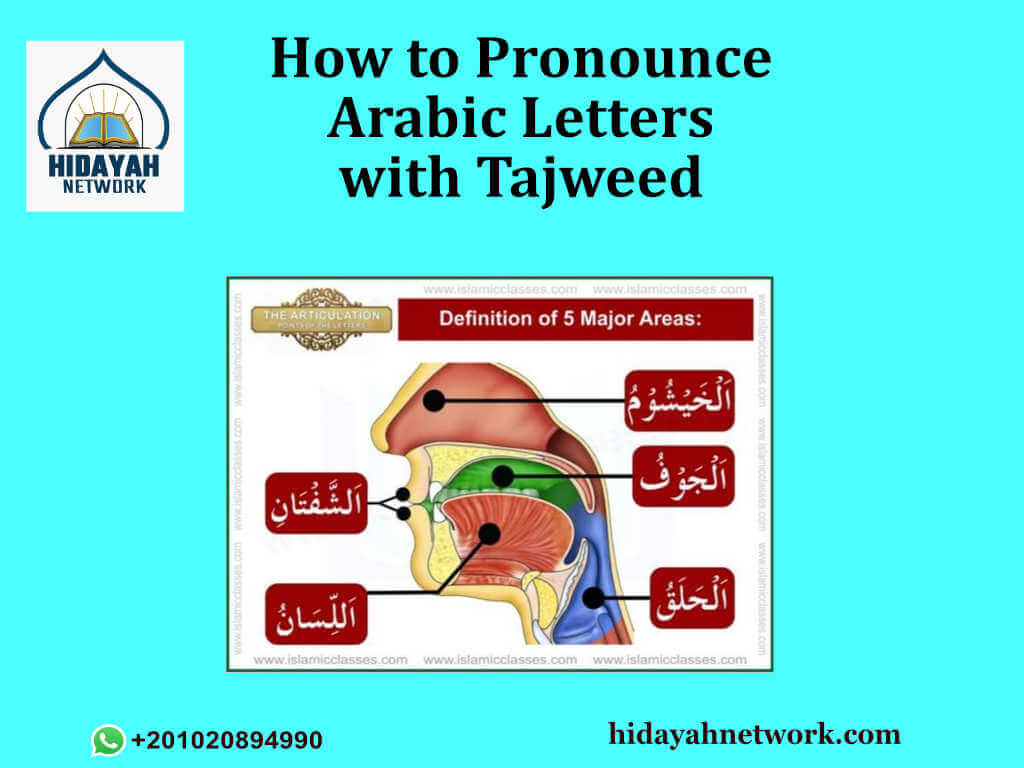Mastering the pronunciation of Arabic letters with Tajweed is a crucial skill for learners. The correct articulation of Arabic sounds ensures the accurate delivery of the Quranic text. We will help you with some of the heavy and light Arabic letters to help you pronounce them with Tajweed.
Learning to pronounce Arabic letters with Tajweed involves precisely positioning the mouth, tongue, and throat to produce the unique phonetics of Arabic. You must learn the essential articulation techniques and apply them diligently to significantly enhance your ability to recite the Quran accurately and with deep reverence.
Table of Contents
ToggleWhat are the Heavy and Light Tajweed Letters in Arabic?
In Arabic Tajweed, specific letters are categorized as “heavy” due to the unique emphasis and prolonged pronunciation they require. Letters such as Taa (ط), Daad (ض), Saad (ص), Dhaa (ظ), Qaaf (ق), and Ghayn (غ) fall into this category. Mastering these heavy letters is crucial in reciting the Quran accurately by learning quran tajweed. Understanding their characteristics, such as the elongation of sound and the proper execution of their pronunciation, is essential for precise and melodious Quranic recitation.
Tajweed rules dictate that these letters demand a distinct emphasis and elongation, impacting the overall rhythm and beauty of Quranic recitation. Learning to pronounce these heavy letters correctly ensures the proper delivery of the Quran’s verses. By learning and understanding these letters any anyone can learn tajweed easily at home.
Get 40% OFF Now!
How to Pronounce Arabic Letters with Tajweed?
| Letter | Pronunciation with Tajweed |
| Alif (ا) | Alif is a long vowel sound. Ensure a prolonged, steady pronunciation without blending with adjacent letters. Maintain proper elongation when encountering a maddah (prolongation) sign. |
| Ba (ب) | Ba is a soft consonant. Close the lips lightly, allowing the air to pass through when pronouncing. Ensure there’s no aspiration, and avoid blending with the following vowel. |
| Taa (ت) | Taa is a light consonant. Pronounce it by touching the tip of the tongue against the upper front teeth without stopping the airflow, ensuring a clear and distinct enunciation. |
| The (ث) | That is a soft sound. It is pronounced by gently placing the tongue tip against the upper front teeth, ensuring a smooth airflow without aspirating the sound. |
| Jim (ج) | Jim is a soft consonant. Pronounce it by allowing the front part of the tongue to touch the hard palate while emitting a soft sound without aspiration. |
| Haa (ح) | Haa is a heavy sound. It’s articulated from the throat, creating a guttural sound with a distinct burst of air. Maintain its heaviness without blending with surrounding sounds. |
| Khaa (خ) | Khaa is a heavy sound. It’s produced from the deep part of the throat, emitting a distinct, heavy, and guttural sound, similar to Haa but heavier. |
| Daal (د) | Daal is a light consonant. Pronounce it by touching the tip of the tongue against the upper front teeth without stopping the airflow, ensuring a clear and distinct enunciation. |
| Zaal (ذ) | Zaal is a soft consonant. Pronounce it by gently placing the tongue tip against the upper front teeth, ensuring a smooth airflow without aspiration. |
| Raa (ر) | Raa is a light consonant. Pronounce it by tapping the tip of the tongue against the upper palate while slightly vibrating the tongue, creating a smooth rolling sound. |
| Zay (ز) | Zay is a soft consonant. Pronounce it by lightly emitting a buzzing sound while keeping the tongue tip close to the upper front teeth. |
| Sein (س) | Sein is a light consonant. Pronounce it by emitting a soft and clear “s” sound, touching the tip of the tongue against the upper front teeth. |
| Shein (ش) | Shein is a soft consonant. Pronounce it by slightly raising the tongue towards the hard palate, emitting a soft “sh” sound without blending with adjacent letters. |
| Saad (ص) | Saad is a heavy sound. Pronounce it from the deep part of the palate, creating a heavy “s” sound with a distinct burst of air, ensuring a prolonged and emphasized pronunciation. |
| Daad (ض) | Daad is a heavy sound. Similar to Saad but heavier, produce it from the deep part of the palate with a more profound emphasis and elongation. |
| Tuaa (ط) | Tuaa is a heavy sound. Pronounce it heavily from the deep part of the palate, ensuring a deep and prolonged “t” sound with a distinct burst of air. |
| Zaa (ظ) | Zaa is a heavy sound. Similar to Tuaa but heavier, produce it from the deep part of the palate with more emphasis and elongation. |
| Ain (ع) | Ain is a heavy sound. Produce it from the throat, emitting a distinct and heavy sound, as if one is slightly choking while ensuring proper elongation. |
| Ghai (غ) | Ghai is a heavy sound. Pronounce it from the back of the throat with a distinct guttural sound, heavier than Ain but similar in its deep and heavy pronunciation. |
| Faa (ف) | Faa is a light consonant. Pronounce it by gently placing the lower lip against the upper front teeth, emitting a soft “f” sound without blending with the following vowels. |
| Qaf (ق) | Qaf is a heavy sound. Pronounce it from the deep part of the palate, ensuring a heavy “k” sound, slightly emphasizing the back of the throat without blending with adjacent letters. |
| Kaf (ك) | Kaf is a light consonant. Pronounce it by gently touching the back of the tongue against the soft palate, emitting a soft “k” sound without blending with the following vowels. |
| Lam (ل) | Lam is a light consonant. Pronounce it by gently touching the tip of the tongue against the upper palate while emitting a clear and soft “l” sound. |
| Meem (م) | Meem is a light consonant. Pronounce it by closing the lips and emitting a soft “m” sound without aspiration or blending with adjacent letters. |
| Noon (ن) | Noon is a light consonant. Pronounce it by touching the tip of the tongue against the upper front teeth, emitting a soft and clear “n” sound. |
| Ha (ه) | Ha is a light consonant. Pronounce it by lightly expelling air with a soft exhalation, ensuring a clear and distinct “h” sound without blending with the following vowels. |
Learn How to Pronounce Arabic Letters with Tajweed with Hidayah Network
Discover the art of pronouncing Arabic letters with Tajweed through the comprehensive guidance offered by Hidayah Network. Their online advance Tajweed course meticulously covers the intricacies of Tajweed rules, providing learners with a structured and insightful approach to mastering the correct articulation of each letter. With a focus on clarity and precision, Hidayah Network’s course empowers Tajweed for beginners with the skills to recite the Quran proficiently.
Final Words
Mastering the pronunciation of Arabic letters with Tajweed is an essential foundation for accurately reciting the Quran. Understanding the distinction between heavy and light letters and adhering to the specific rules for each letter enables learners to embody the eloquence and spiritual depth of Quranic recitation. Precise articulation and adherence to Tajweed rules ensure a melodious and accurate rendition, preserving the intended meaning and essence of the sacred text.

About Author

